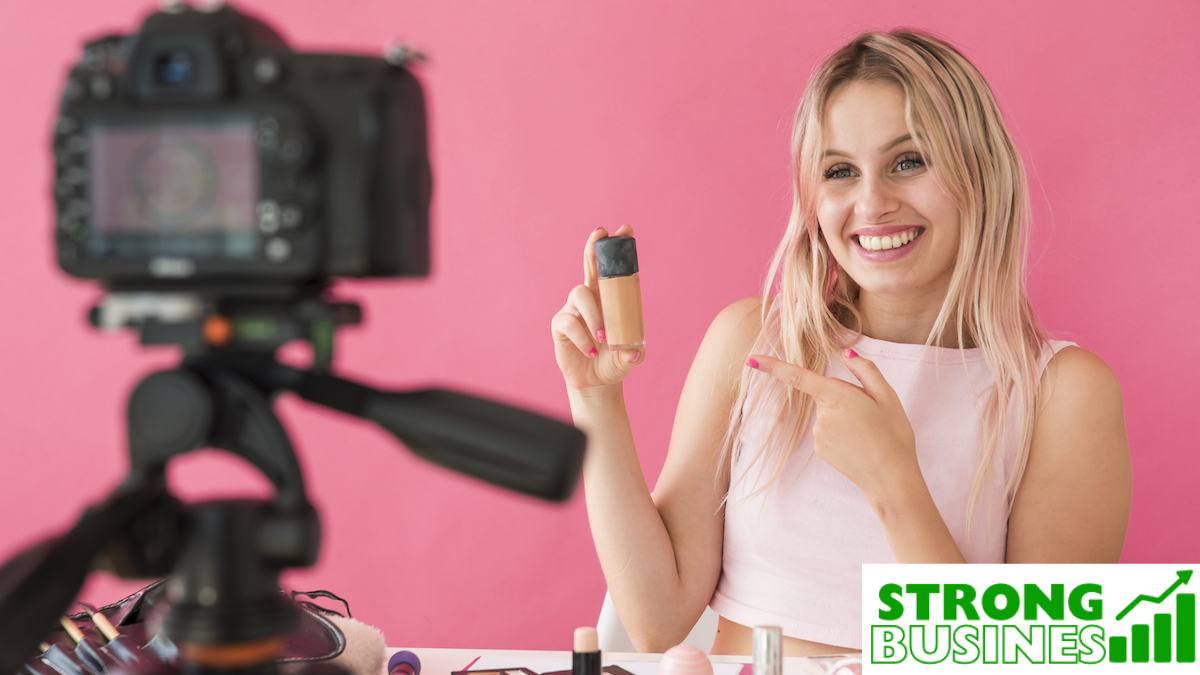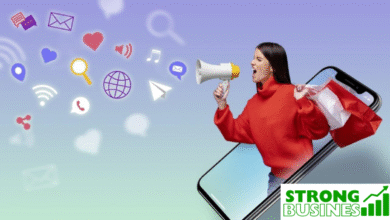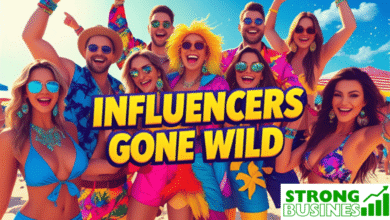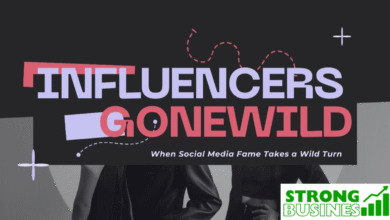Introduction to the Influencer Era
Influencers Gone Wild In the digital age, the concept of fame has dramatically evolved. Traditional celebrities once dominated tabloids and headlines, but today’s pop culture landscape is ruled by a new breed: social media influencers. These are individuals who amass massive online followings by curating aesthetically pleasing content, offering lifestyle advice, promoting products, or simply sharing aspects of their daily lives. While many use their platforms responsibly, the phenomenon of “influencers gone wild” highlights a darker, chaotic side to this newfound fame. This article explores the rise of influencers, their moments of notoriety, and the implications of a culture that often rewards outrageous behavior.
The Making of an Influencer
Influencers thrive on platforms like Instagram, TikTok, YouTube, and Twitch. Their success hinges on their ability to engage audiences, build communities, and often monetize their influence through sponsorships and partnerships. Unlike celebrities who traditionally rose to fame through talent, influencers are often self-made. They leverage their personalities, niche interests, or provocative behavior to gain followers. The barrier to entry is relatively low—anyone with a smartphone and Wi-Fi can potentially become an influencer.
This democratization of fame has its pros and cons. On the one hand, it has given a voice to diverse individuals and marginalized communities. On the other, it has opened the door for fame-hungry individuals willing to do anything for likes, shares, and viral attention. When influencers seek virality at all costs, ethical lines can blur, and “influencers gone wild” becomes a disturbing trend.
Outrage as a Strategy
Many influencers have realized that controversy sells. What might have once been a misstep or lapse in judgment is now part of a deliberate strategy. By pushing boundaries—whether through offensive comments, inappropriate stunts, or reckless behavior—they can attract media attention and drive engagement. The social media algorithm often rewards such behavior, promoting posts that generate strong reactions, whether positive or negative.
Examples abound of influencers engaging in disruptive antics, such as public disturbances, cultural appropriation, and insensitive content about serious social issues. While some face backlash and temporary cancellation, others convert that notoriety into more followers and brand deals. The spectacle becomes the product, and the influencer, a master manipulator of public attention.
Psychological Toll and Craving for Validation
Behind the screens, the life of an influencer can be more toxic than it appears. The constant need to perform, post, and please an ever-demanding audience can create intense psychological pressure. Many influencers tie their self-worth to metrics like likes, comments, and follower count. This validation-driven lifestyle can lead to burnout, anxiety, and depression.
When influencers experience dips in engagement, some resort to extreme measures to reclaim relevance. This can manifest in erratic behavior, public breakdowns, or the sharing of deeply personal or shocking content. These episodes feed into the “gone wild” narrative, not just as wild behavior, but as emotional unraveling laid bare for public consumption.
Scandals and Social Reckoning
Numerous influencers have found themselves at the center of controversy. From offensive remarks resurfacing to illegal actions caught on video, the public is quick to hold them accountable. “Influencers gone wild” isn’t just about viral antics; it’s about the recklessness that emerges when there’s little oversight or accountability.
The influencer economy lacks a formalized structure or code of conduct. As a result, influencers operate in a gray area where ethical behavior is subjective and often dictated by audience tolerance. However, the tide is turning. Cancel culture, for better or worse, has emerged as a form of crowd-sourced accountability. It demonstrates that followers are not passive consumers but can influence the influencer.
The Role of Brands and Sponsorships
Corporate partnerships are a major revenue stream for influencers. Brands are increasingly cautious about whom they associate with, and a single controversial moment can jeopardize lucrative deals. While some influencers are dropped instantly after a scandal, others are embraced by brands looking to tap into the edgy or rebellious image.
This inconsistency reflects a broader dilemma in influencer marketing. Brands must weigh the benefits of virality against the risks of association. Some use morality clauses in contracts, allowing them to sever ties if the influencer engages in behavior deemed harmful to their image. However, others may intentionally partner with controversial figures to stir buzz, knowing controversy can translate into clicks and sales.
Legal and Ethical Consequences
As influencer scandals grow in magnitude, legal consequences become more common. Reckless pranks, fraudulent claims, and breaches of platform rules can all lead to litigation, bans, or fines. For example, influencers who promote financial schemes, health products, or fake giveaways can be sued for misleading their followers.
Ethically, the question arises: do influencers have a duty of care toward their audience? When their actions cause harm—either by encouraging risky behavior or spreading misinformation—should they be held accountable in the same way as journalists or advertisers? These debates continue to evolve, particularly as regulators around the world take a closer look at influencer activities.
Social Media Platforms and Responsibility
Social media companies play a significant role in enabling or curbing wild influencer behavior. Platforms often react rather than act, removing content or accounts only after public outcry. Algorithms are designed to maximize engagement, not ethical content, meaning the more outrageous a post, the more visibility it gets.
There are growing calls for platforms to implement stricter content moderation, transparency in algorithmic decisions, and tools to report harmful influencer behavior. While some progress has been made, the sheer volume of content makes consistent enforcement difficult. As a result, influencers continue to operate with considerable freedom.
Influence on Youth and Social Norms
Young people, in particular, are heavily influenced by the content they consume. Many look up to influencers as role models, often imitating their behavior and adopting their values. When influencers go wild—engaging in reckless, offensive, or illegal acts—it sends a confusing message to impressionable followers.
Parents, educators, and psychologists have voiced concerns about the impact of influencer culture on mental health, self-image, and social development. The curated perfection and occasional chaos seen online can create unrealistic expectations and promote superficial values. Media literacy education is now seen as vital in helping young users navigate these digital spaces critically.
The Double-Edged Sword of Virality
Going viral can make or break an influencer’s career. It offers visibility, fame, and opportunities—but it also invites scrutiny, criticism, and sometimes even harassment. Many influencers who experience a meteoric rise struggle to maintain relevance or handle the pressures that come with it. Some end up sabotaging their own careers through impulsive or scandalous acts.
The speed at which someone can go from obscurity to global recognition is unprecedented. Yet this acceleration comes without the gradual learning curve that traditional celebrities experienced. Influencers are thrust into the limelight without the support systems or public relations training to handle it, increasing the likelihood of wild, unfiltered behavior.
Redemption and Rebranding
While some influencers spiral irreparably, others manage to bounce back from controversies. Public apologies, rebranding efforts, and strategic partnerships can help them rehabilitate their image. Some lean into their past, owning up to their mistakes and using their platform to advocate for change or share lessons learned.
The public’s capacity for forgiveness often depends on the influencer’s response, the severity of the offense, and the prevailing cultural climate. In some cases, redemption arcs can lead to even greater popularity, as audiences appreciate vulnerability and growth. This highlights the complexity of cancel culture and the dynamics of digital fame.
Influencers as a Reflection of Society
Influencers do not exist in a vacuum. They reflect societal values, trends, and priorities. The phenomenon of “influencers gone wild” isn’t just about individual failings—it speaks to a culture that rewards visibility over integrity, engagement over ethics. In many ways, influencers are a mirror of what society finds entertaining, admirable, or forgivable.
As digital platforms continue to shape our world, the actions of influencers—wild or wise—will remain central to conversations about identity, responsibility, and the future of fame. Whether they are celebrated, condemned, or ignored, influencers will continue to wield power. The key question is: how will we choose to respond?
Future of Influencer Culture
Looking ahead, the influencer industry is unlikely to shrink. Instead, it will evolve with better tools, regulations, and perhaps a more discerning public. Platforms may refine algorithms to prioritize healthier content. Brands may vet collaborations more carefully. Audiences may demand more accountability and transparency.
But as long as attention remains the currency of the internet, the temptation to go wild will always exist. The challenge lies in creating an ecosystem where influence is earned through authenticity, value, and respect, rather than shock, manipulation, and spectacle.
Conclusion
The rise of influencers has reshaped how we view fame, connection, and success. While many use their platforms for good, the trend of “influencers gone wild” serves as a cautionary tale about the dangers of unchecked attention. It reveals the cracks in a system that values virality over virtue and spectacle over substance. Understanding this dynamic is essential, not just for influencers, but for everyone who engages with digital media.
In a world where everyone has a voice, the real power lies not just in speaking—but in choosing how to be heard. As society matures alongside its digital platforms, the hope is that influence will be wielded more wisely, and the wildness of the present era will give way to a more thoughtful, impactful future.
Frequently Asked Questions
What does “influencers gone wild” mean?
It refers to influencers engaging in reckless, controversial, or outrageous behavior—often in pursuit of attention, engagement, or relevance on social media.
Why do influencers behave badly online?
Many influencers realize that controversy can drive engagement. Outrage often leads to virality, which can boost their visibility and sometimes increase sponsorship opportunities.
Are influencers held accountable for their actions?
Sometimes. While public backlash or “Influencers Gone Wild” can hold influencers accountable, the consequences vary widely. Some face real consequences, while others bounce back or even grow more popular.
Do social media platforms control influencer behavior?
Platforms have guidelines and moderation tools, but enforcement is often inconsistent. Influencers still have significant freedom to post controversial content unless it violates platform policies.
How can we create a healthier influencer culture?
Media literacy, ethical brand partnerships, responsible platform algorithms, and audience awareness are all important steps toward a more responsible and impactful influencer ecosystem.





